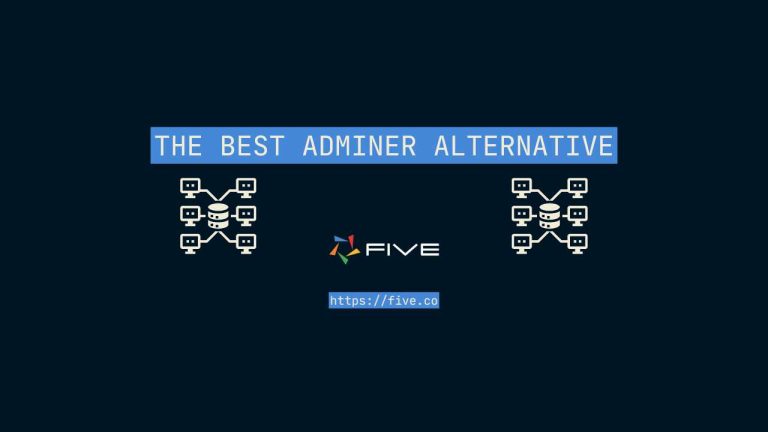MySQL Full Outer Join: A Comprehensive Guide
Breakdown of MySQL Full Outer Join
In relational databases, joining tables is a fundamental operation. MySQL offers various types of joins, such as INNER JOIN, LEFT JOIN, and RIGHT JOIN, but one type of join that is not natively supported is the FULL OUTER JOIN. This join type is essential when you want to combine all records from two tables, whether they have matching rows or not.
In this article, we will explore what a FULL OUTER JOIN is, why it’s useful, and how you can implement it in MySQL using alternative methods.
What is a Full Outer Join?
A FULL OUTER JOIN combines the results of both LEFT JOIN and RIGHT JOIN. It returns all records when there is a match in either the left or right table, and if there is no match, it returns NULL for columns from the table that doesn’t have a matching row.
Example Scenario:
Suppose you have two tables, employees and departments. You want to retrieve a list of all employees and all departments, regardless of whether they are linked to each other. A FULL OUTER JOIN would provide this comprehensive list.
Employees Table:
| EmployeeID | EmployeeName | DepartmentID |
|---|---|---|
| 1 | Alice | 10 |
| 2 | Bob | 20 |
| 3 | Charlie | NULL |
Departments Table:
| DepartmentID | DepartmentName |
|---|---|
| 10 | HR |
| 20 | Finance |
| 30 | IT |
A FULL OUTER JOIN between these two tables would return:
| EmployeeID | EmployeeName | DepartmentID | DepartmentName |
|---|---|---|---|
| 1 | Alice | 10 | HR |
| 2 | Bob | 20 | Finance |
| NULL | NULL | 30 | IT |
| 3 | Charlie | NULL | NULL |
Why MySQL Doesn’t Support Full Outer Join Natively
Unlike some other SQL databases like PostgreSQL or SQL Server, MySQL does not have built-in support for FULL OUTER JOIN. This is due to historical design choices, where the developers of MySQL prioritized other join types that are more frequently used in typical database operations.
However, even without native support, you can still achieve the functionality of a FULL OUTER JOIN using a combination of LEFT JOIN, RIGHT JOIN, and UNION.
How to Simulate Full Outer Join in MySQL
To perform a FULL OUTER JOIN in MySQL, you need to combine the results of a LEFT JOIN and a RIGHT JOIN using the UNION operator. This approach ensures that you retrieve all records from both tables.
Example Query:
SELECT employees.EmployeeID, employees.EmployeeName, departments.DepartmentID, departments.DepartmentName
FROM employees
LEFT JOIN departments ON employees.DepartmentID = departments.DepartmentID
UNION
SELECT employees.EmployeeID, employees.EmployeeName, departments.DepartmentID, departments.DepartmentName
FROM departments
RIGHT JOIN employees ON employees.DepartmentID = departments.DepartmentID;This query returns all rows from both tables, filling in NULL for columns where there is no match.
Breaking Down the Query
- LEFT JOIN Part:
The first part of the query selects all rows from theemployeestable and joins them with matching rows in thedepartmentstable. If there is no match, it fills inNULLfor the department columns.
SELECT employees.EmployeeID, employees.EmployeeName, departments.DepartmentID, departments.DepartmentName
FROM employees
LEFT JOIN departments ON employees.DepartmentID = departments.DepartmentID;- RIGHT JOIN Part:
The second part of the query selects all rows from thedepartmentstable and joins them with matching rows in theemployeestable. If there is no match, it fills inNULLfor the employee columns.
SELECT employees.EmployeeID, employees.EmployeeName, departments.DepartmentID, departments.DepartmentName
FROM departments
RIGHT JOIN employees ON employees.DepartmentID = departments.DepartmentID;- Combining with UNION:
TheUNIONoperator combines the results of the two queries. By default,UNIONremoves duplicate rows, ensuring that you get a complete set of results with no repetitions.
MySQL Full Outer Join with a Rapid Database Builder
While understanding SQL and executing efficient queries isn’t too difficult, building a complete database often requires significant SQL knowledge. This is where rapid database builders like Five come into play.
Five provides a MySQL database for your application and generates an automatic UI, making it easier to interact with your data.
With Five, you can create interactive forms, dynamic charts, and comprehensive reports that are automatically generated based on your database schema. This means you can efficiently handle complex queries, such as simulating a Full Outer Join in MySQL, even though it’s not natively supported.
Five also enables you to write custom JavaScript and TypeScript functions, providing additional flexibility to implement complex business logic.
Once your application is ready, Five simplifies deployment with just a few clicks, allowing you to deploy your MySQL-based application to a secure, scalable cloud infrastructure. This lets you focus on development while Five handles the intricacies of cloud deployment.
If you’re serious about using MySQL and efficiently managing data give Five a try.
Sign up for free access to Five’s online development environment and start building your MySQL web application today.
Things to Consider
While the UNION approach works well for simulating a FULL OUTER JOIN in MySQL, it can be slower than native FULL OUTER JOIN implementations in other databases. This is because MySQL has to perform two joins and then combine the results.
To optimize performance:
- Index your tables: Ensure that the columns used in the JOIN conditions are indexed.
- Limit the data: Use WHERE clauses to filter the data before performing the joins, reducing the number of rows MySQL needs to process.
- Analyze the query: Use the
EXPLAINstatement to see how MySQL executes your query and identify potential bottlenecks.
Use Cases for Full Outer Join
- Merging Data from Different Sources: When combining data from different systems or tables, a FULL OUTER JOIN ensures that no data is lost, even if there are mismatches.
- Data Reconciliation: When reconciling data between two systems, a FULL OUTER JOIN allows you to identify discrepancies by showing all records, regardless of whether they match.
- Reporting and Analysis: In reporting scenarios, you may need to present a complete dataset that includes all possible records, even if some relationships are missing.
Alternatives to Full Outer Join
If performance is a concern or if the UNION approach becomes too complex, consider these alternatives:
- LEFT JOIN with NULL checks: If you only need records from one table and don’t care about the unmatched rows from the other table, a LEFT JOIN with NULL checks can be simpler and faster.
- Using Application Logic: In some cases, it may be more efficient to handle the full outer join logic in your application code rather than in SQL.
FAQs
- Why doesn’t MySQL support FULL OUTER JOIN natively?
MySQL prioritizes other join types that are more commonly used in typical database operations. However, you can still achieve FULL OUTER JOIN functionality using LEFT JOIN, RIGHT JOIN, and UNION. - How can I optimize a FULL OUTER JOIN in MySQL?
Index your tables, limit the data with WHERE clauses, and use the EXPLAIN statement to analyze and optimize your query. - Can I use FULL OUTER JOIN with more than two tables in MySQL?
Yes, you can extend the UNION approach to handle more than two tables, but it can become complex. Consider breaking down the query or using application logic if needed. - What’s the difference between FULL OUTER JOIN and LEFT JOIN in MySQL?
A FULL OUTER JOIN returns all records from both tables, while a LEFT JOIN returns all records from the left table and only matching records from the right table. - Are there any limitations to using UNION for FULL OUTER JOIN in MySQL?
The main limitation is performance, as MySQL needs to process two joins and combine the results. However, with proper indexing and query optimization, you can mitigate this.
Summary
While MySQL doesn’t natively support FULL OUTER JOIN, you can simulate it using a combination of LEFT JOIN, RIGHT JOIN, and UNION. By understanding how to implement this technique, you can perform comprehensive data merges and ensure that no records are left behind.
Sign up for free access to Five’s online development environment and start building your MySQL web application today.


